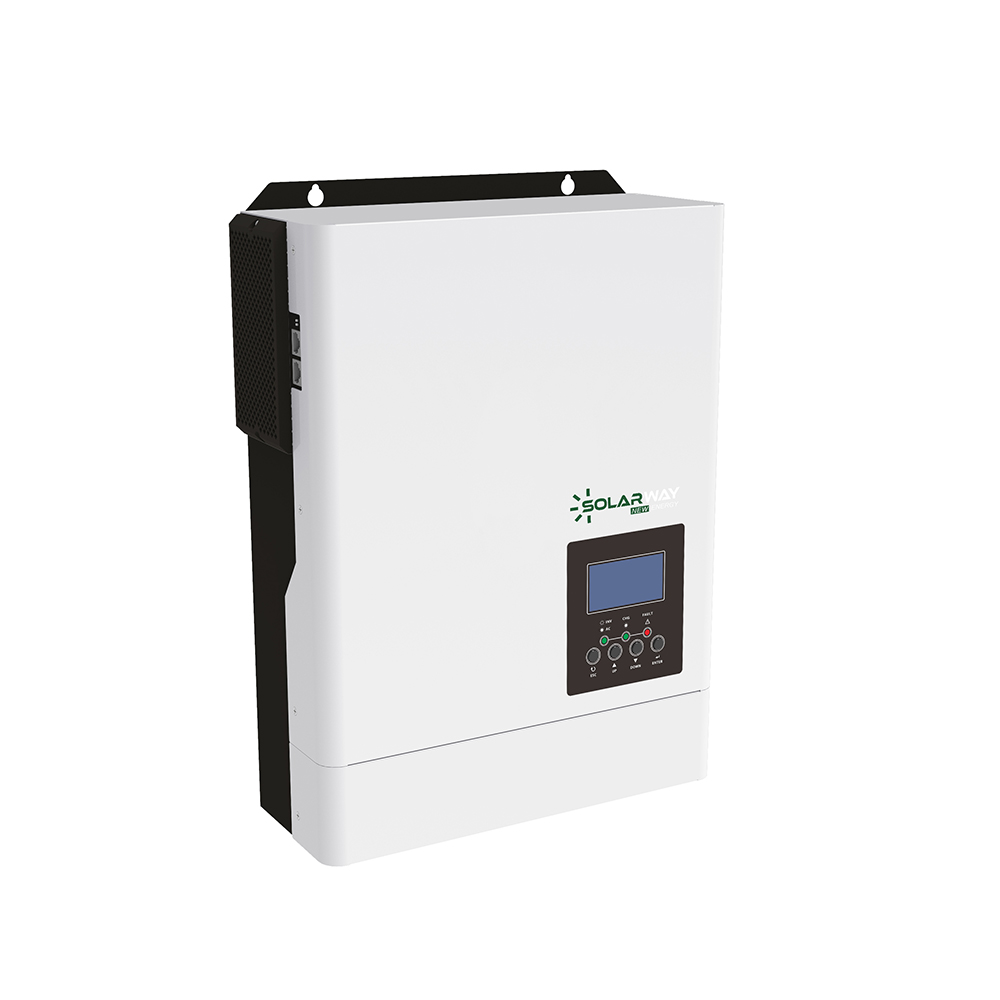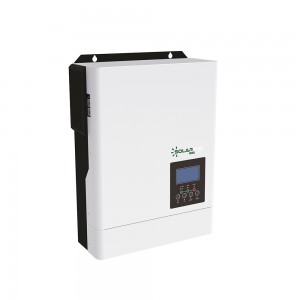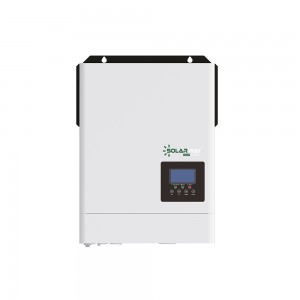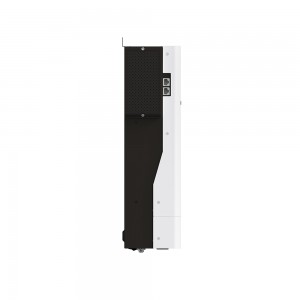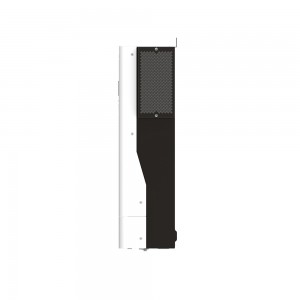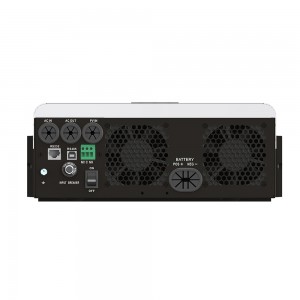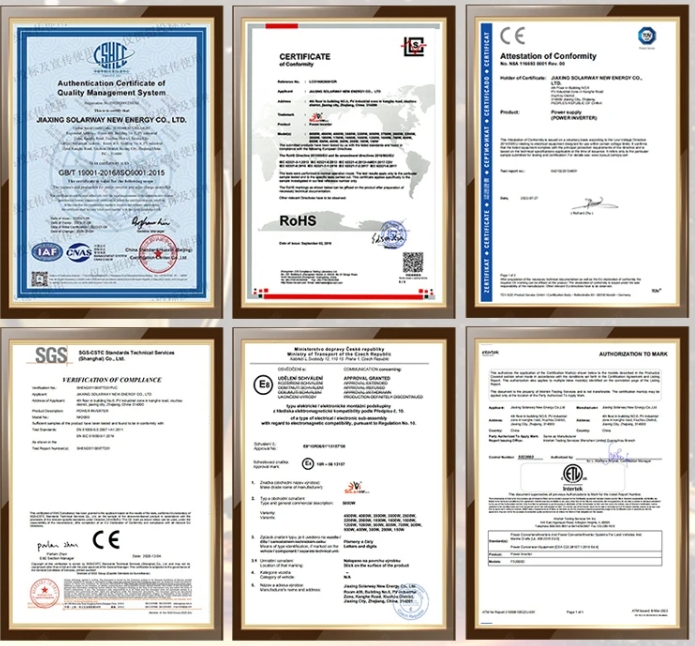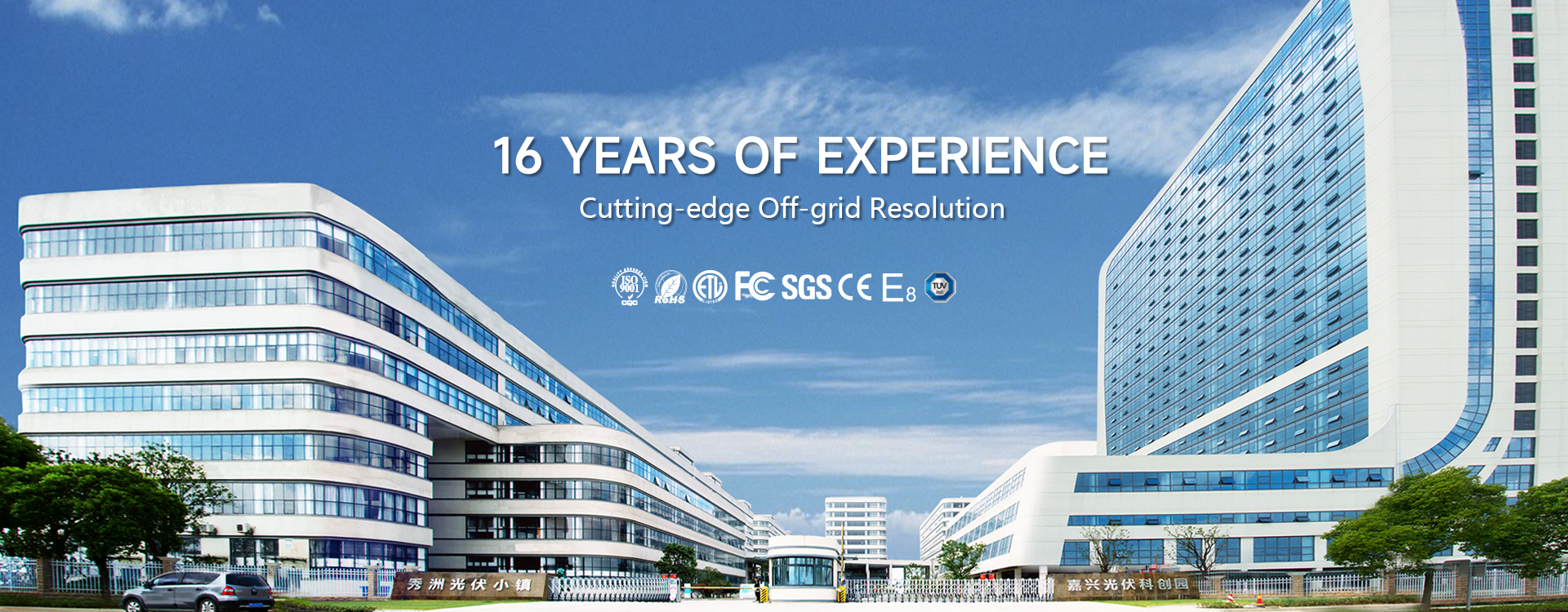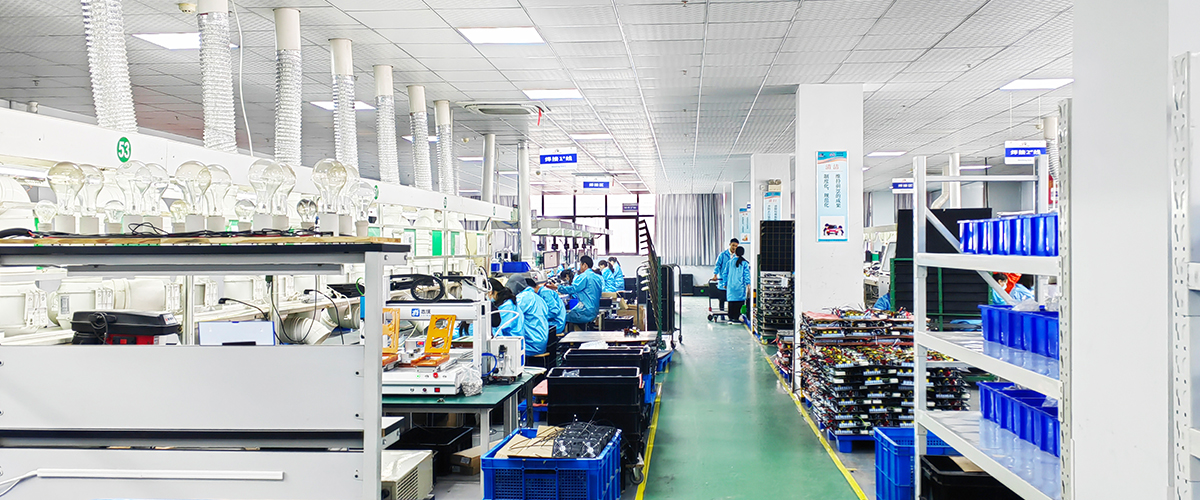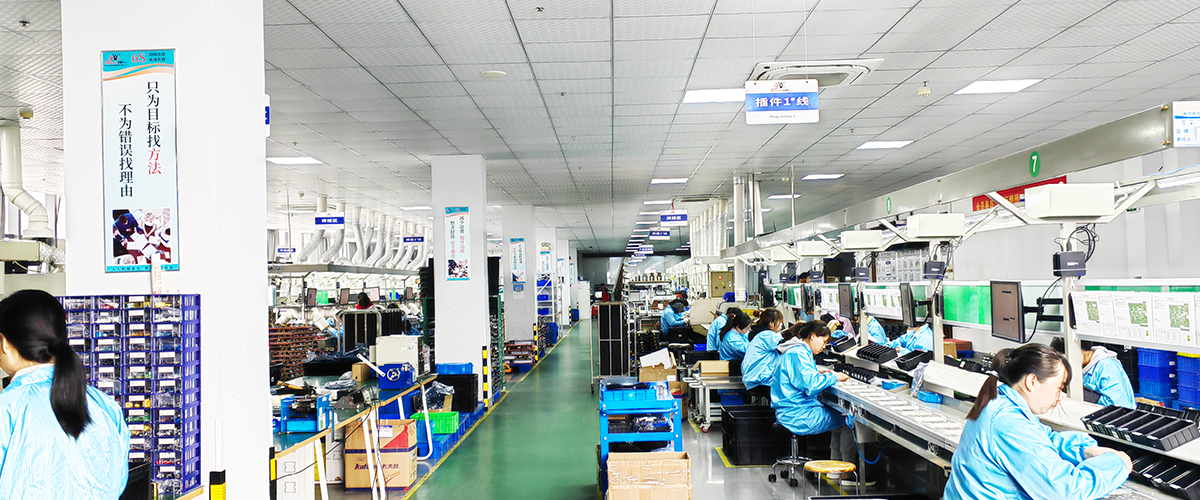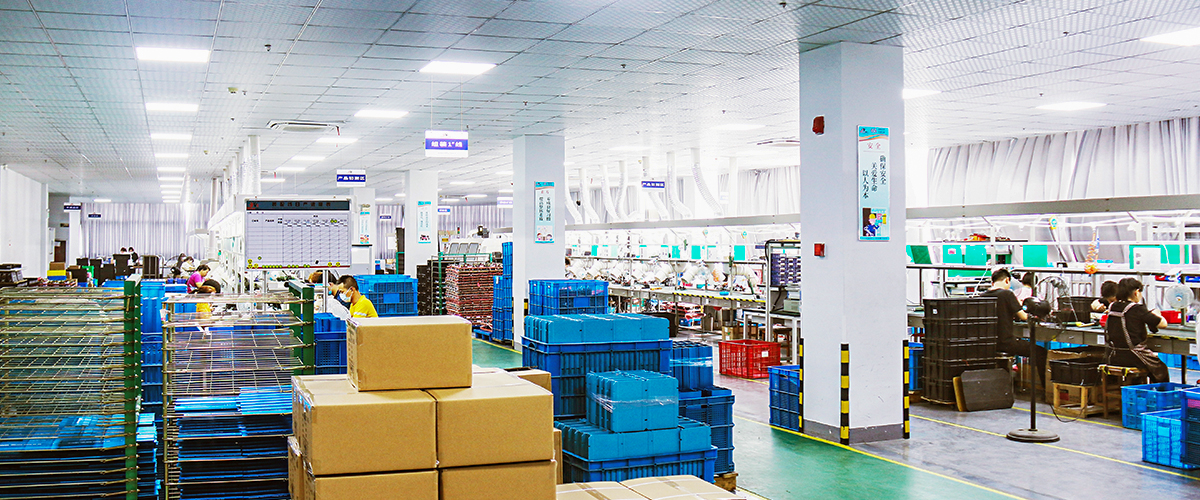5500w 220v/230v AC Output Mppt 120v DC To 500v DC Pv Input Hybrid Solar Inverter
Features
•Pure Sine Wave
•PV input 500Vdc Max
•Built-in MPPT 100A
•Capable to work without battery
•Detachable dust cover for harsh environment
•WiFi remote monitoring optional
•Compatible work with lifepo4 battery
•Support multiple output priority: UTL, SOL,SBU, SUB
•Parallel operation up to 12 units in 1phase or 3phase
•EQ function to optimize battery performance and extend lifecycle
More Details
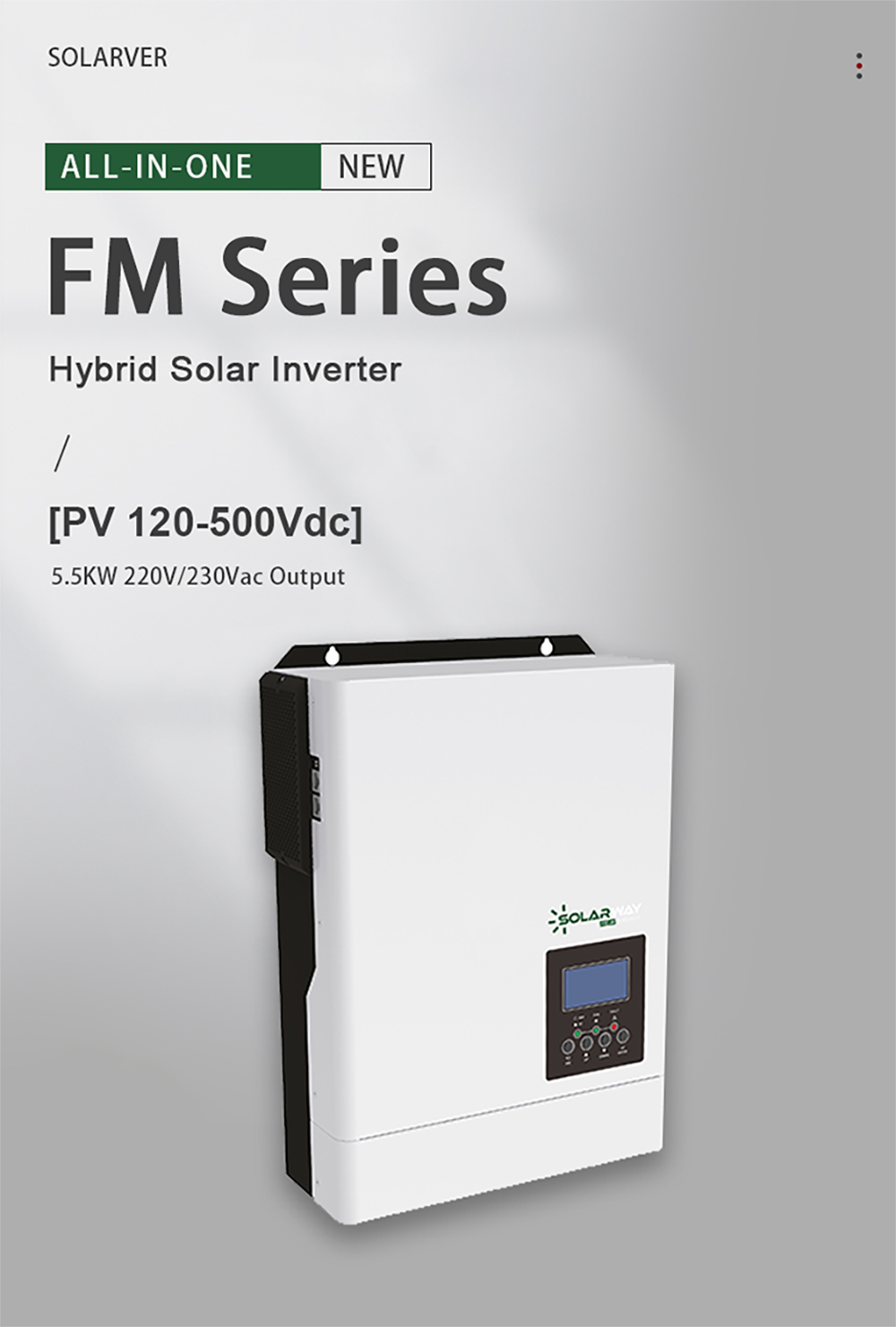
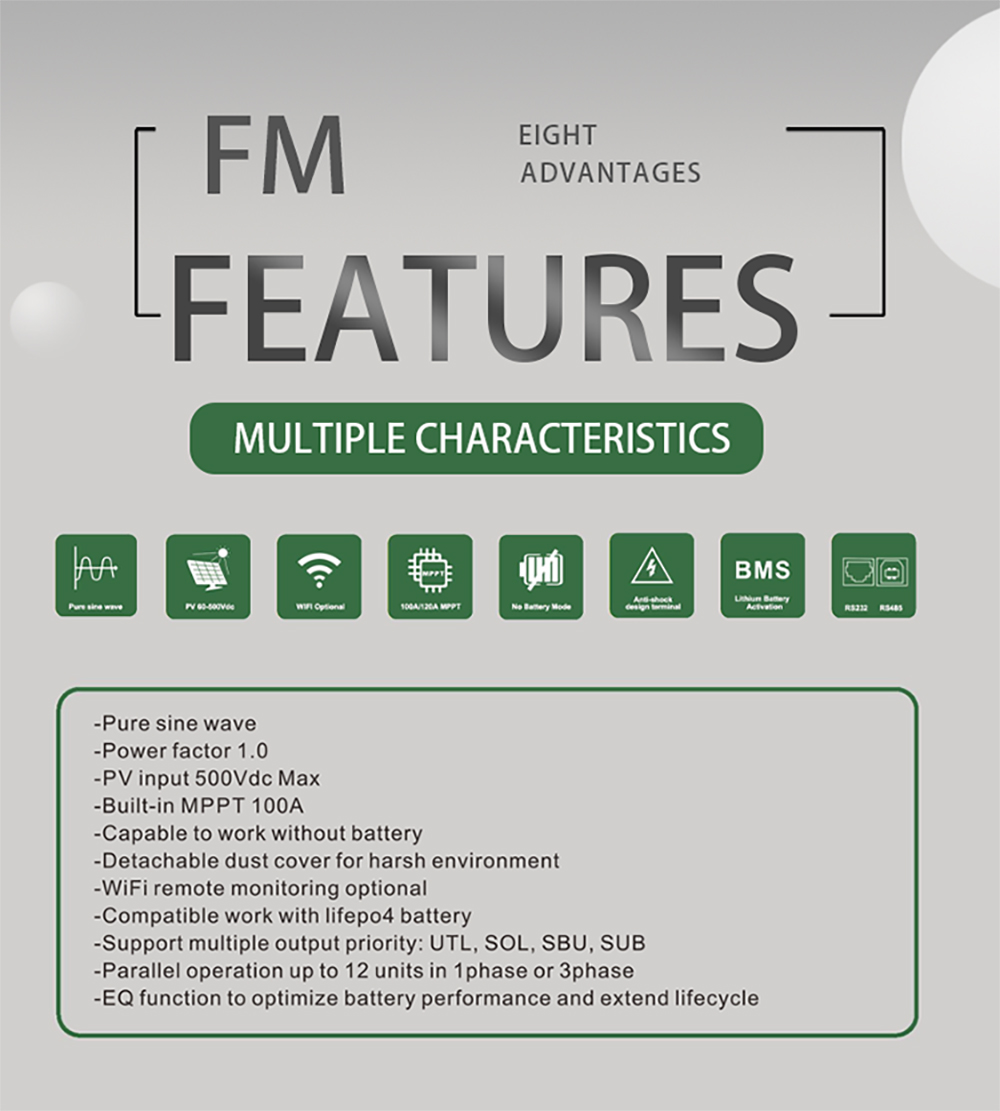
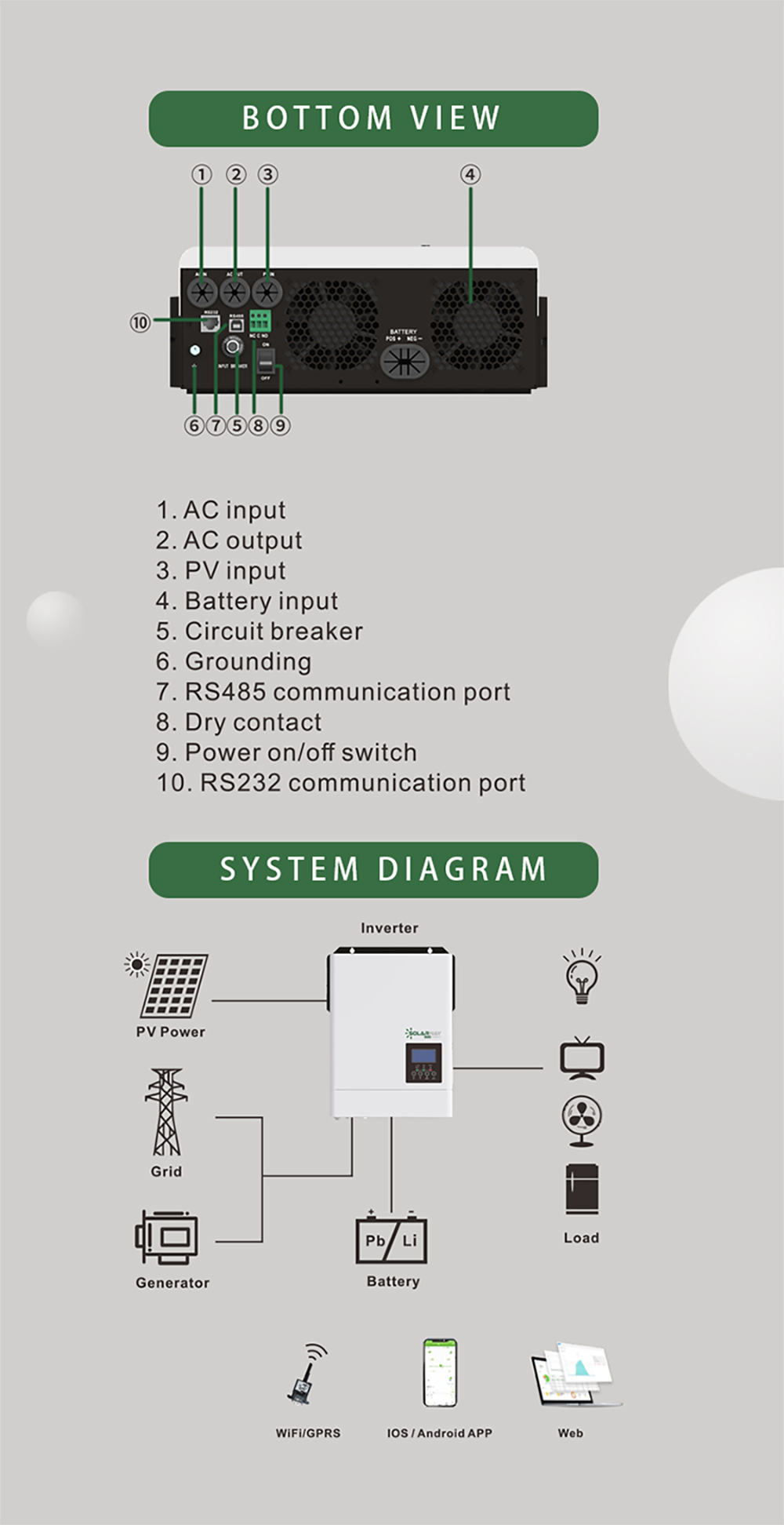
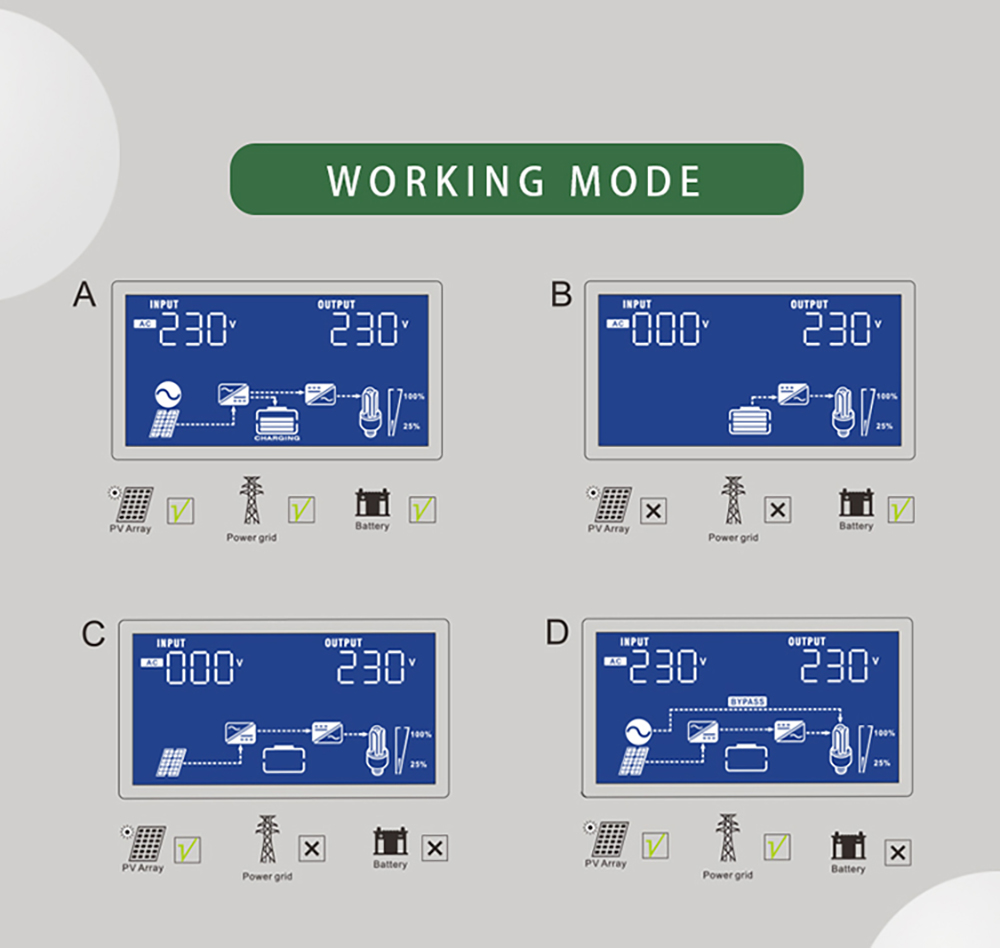
| MODEL | FM3500-24 FM5500-48 | FM5500-48PL | |
| Capacity | 3.5KVA/3.5KW | 5.5KVA/5.5KW | 5.5KVA/5.5KW |
| Parallel Capability | NO | NO | YES,12 Units |
| INPUT | |||
| Nominal Voltage | 230VAC | ||
| Acceptable Voltage Range | 170-280VAC(For personal Computer):90-280vac(For Home Appliances) | ||
| Frequency | 50/60 Hz(Auto sensing) | ||
| OUTPUT | |||
| Nominal Voltage | 220/230VAC±5% | ||
| Surge Power | 7000VA | 11000VA | 11000VA |
| Frequency | 50/60Hz | ||
| Waveform | Pure Sine wave | ||
| Transfer Time | 10ms(For personal Computer);20ms(For Home Appliances) | ||
| Peak Efficiengy(PV to INV) | 96% | ||
| Peak Efficiengy(Battery to INV) | 93% | ||
| Overload Protection | 5s@>=150% load;10s@110%~150% load | ||
| Crest Factor | 3:1 | ||
| Admissible Power Factor | 0.6~1(inductive or capacitive) | ||
| BATTERY | |||
| Battery Voltage | 24VDC | 48VDC | 48VDC |
| Floating Charge Voltage | 27VDC | 54VDC | 54VDC |
| OverCharge Protection | 33VDC | 63VDC | 63VDC |
| Charging Method | CC/CV | ||
| Solar Charger & AC Charger | |||
| Solar Charger Type | MPPT | ||
| MaxPV Array Power | 4000W | 5500W | 5500W |
| MaxPV Array Open Circuit Voltage | 500VDC | ||
| PV Array MPPT Voltage Range | 120VDC~450VDC | ||
| Max Solar Input Current | 15A | 18A | 18A |
| Max Solar Charge Current | 100A | 100A | 100A |
| Max AC Charge Current | 60A | 60A | 60A |
| Max.Charge Current | 100A | 100A | 100A |
| PHYSICAL | |||
| Dimensions,D xWx H(mm) | 448x295x120 | ||
| Package Dimensions,DxWxH(mm) | 560x375x190 | ||
| Net Weight(Kg) | 9 | 10 | 10 |
| Communication Interface | USB /RS232/Dry-contact | USB/RS232 / Dry-contact | RS485/RS232/Dry-contact |
| ENVIRONMENT | |||
| Operating Temperature Range | (-10℃ to 50℃) | ||
| Storage Temperature | (-15℃~50℃) | ||
| Humidity | 5% to 95% Relative Humidity(Non-condensing) | ||
| Product specifications are subject to change without further notice. | |||
1. Why is your quotation higher than other suppliers?
In the Chinese market, many factories sell low-cost inverters that are assembled by small, unlicensed workshops. These factories cut costs by using substandard components. This results in major security risks.
SOLARWAY is a professional company engaged in R&D, manufacturing, and sales of power inverters. We have been actively involved in the German market for over 10 years, exporting around 50,000 to 100,000 power inverters each year to Germany and its neighboring markets. Our product quality is deserving of your trust!
2. How many categories do your power inverters have according to the output waveform?
Type 1: Our NM and NS series Modified Sine Wave inverters use PWM (Pulse Width Modulation) to generate a modified sine wave. Thanks to the use of intelligent, dedicated circuits and high-power field-effect transistors, these inverters significantly reduce power loss and improve the soft-start function, ensuring greater reliability. While this type of power inverter can meet the needs of most electrical equipment when power quality is not highly demanding, it still experiences around 20% harmonic distortion when running sophisticated equipment. The power inverter can also cause high-frequency interference to radio communications equipment. However, this type of power inverter is efficient, produces low noise, is moderately priced, and is therefore a mainstream product on the market.
Type 2: Our NP, FS, and NK series Pure Sine Wave inverters adopt an isolated coupling circuit design, offering high efficiency and stable output waveforms. With high-frequency technology, these power inverters are compact and suitable for a wide range of loads. They can be connected to common electrical devices and inductive loads (such as refrigerators and electric drills) without causing any interference (e.g., buzzing or TV noise). The output of a pure sine wave power inverter is identical to the grid power we use daily—or even better—since it does not produce the electromagnetic pollution associated with grid-tied power.
3. What are resistive load appliances?
Appliances such as mobile phones, computers, LCD TVs, incandescent lights, electric fans, video broadcasters, small printers, electric mahjong machines, and rice cookers are considered resistive loads. Our modified sine wave inverters can successfully power these devices.
4. What are inductive load appliances?
Inductive load appliances are devices that rely on electromagnetic induction, such as motors, compressors, relays, fluorescent lamps, electric stoves, refrigerators, air conditioners, energy-saving lamps, and pumps. These appliances typically require 3 to 7 times their rated power during startup. As a result, only a pure sine wave inverter is suitable for powering them.
5. How to choose a suitable inverter?
If your load consists of resistive appliances, such as light bulbs, you can choose a modified sine wave inverter. However, for inductive and capacitive loads, we recommend using a pure sine wave inverter. Examples of such loads include fans, precision instruments, air conditioners, refrigerators, coffee machines, and computers. While a modified sine wave inverter may start some inductive loads, it can shorten its lifespan because inductive and capacitive loads require high-quality power for optimal performance.
6. How do I choose the size of the inverter?
Different types of loads require different amounts of power. To determine the size of the inverter, you should check the power ratings of your loads.
- Resistive loads: Choose an inverter with the same power rating as the load.
- Capacitive loads: Choose an inverter with 2 to 5 times the power rating of the load.
- Inductive loads: Choose an inverter with 4 to 7 times the power rating of the load.
7. How should the battery and inverter be connected?
It is generally recommended that the cables connecting the battery terminals to the inverter be as short as possible. For standard cables, the length should be no more than 0.5 meters, and the polarity should match between the battery and the inverter.
If you need to increase the distance between the battery and the inverter, please contact us for assistance. We can calculate the appropriate cable size and length.
Keep in mind that longer cable connections can cause voltage loss, meaning the inverter voltage may be significantly lower than the battery terminal voltage, leading to an undervoltage alarm on the inverter.
8. How do you calculate the load and working hours required to configure the battery size?
We typically use the following formula for calculation, though it may not be 100% accurate due to factors like the condition of the battery. Older batteries may have some loss, so this should be considered a reference value:
Work hours (H) = (Battery capacity (AH)*Battery voltage (V0.8)/ Load power (W)

